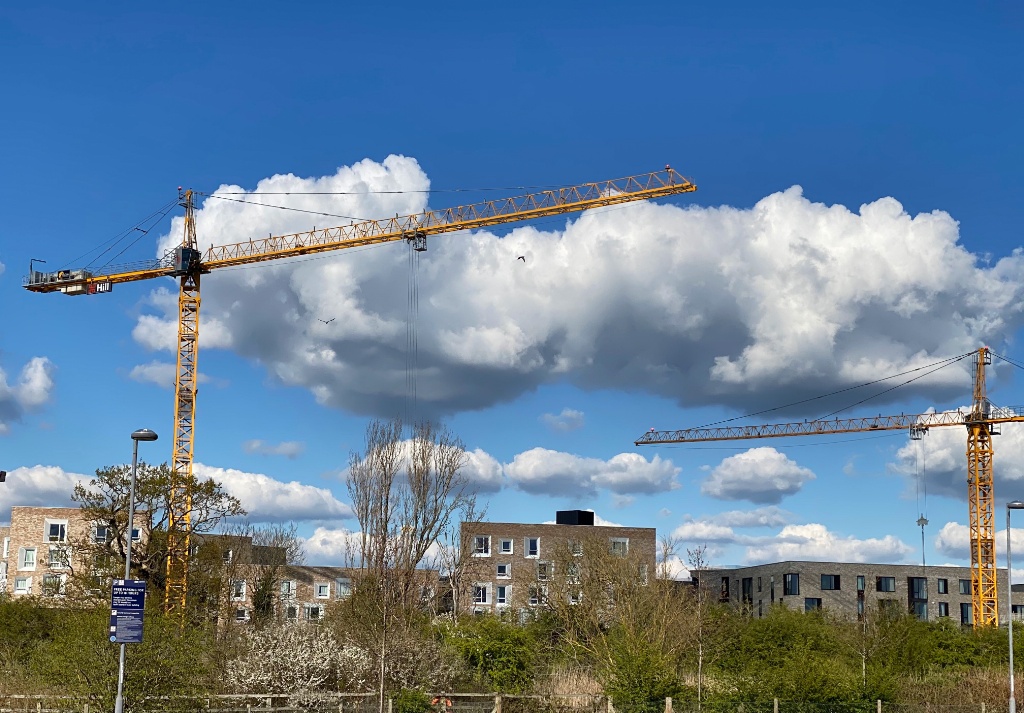Painting with light
Someone once said that photography is “painting with light”. A bit pretentious, perhaps, but it’s certainly the case that if you’re a serious photographer you’re slightly obsessed with light. I vividly remember the first time I went to Provence: we flew in to Montpelier late in the evening, arriving in total darkness. Picked up a rental car, got hopelessly lost (partly because of an eccentrically-located Autoroute toll) and arrived at our destination in the middle of the night. Climbed into bed exhausted but was woken very early by sunlight flooding into the bedroom. Went sleepily to the window and looked out over the valley (the house was on a hill). And — whoosh! — I suddenly understood why Van Gogh & Co came to this part of the world. And it was all to do with the ineffable quality of the light.
If you’re a landscape photographer you’ll also be obsessive about air-quality. I grew up in the West of Ireland where there was very little dust in the atmosphere (largely because it was regularly washed clean by rain!) So, in later life, coming off a plane from grain-harvesting East Anglia in August made one blink — it was as if a veil had been lifted from one’s eyes. The air suddenly seemed so clean.
The other thing that’s special about Irish light (and I guess about light anywhere that’s located on an ocean coast) is that it’s mostly sunlight filtered through clouds. When I was growing up I never thought about clouds, except perhaps as harbingers of rain. And then one day my family and I ran into an English tourist who was a serious photographer. My father asked her what she liked about Ireland and she replied — without hesitation — “Oh, the cloudscapes”. It was the first time I’d ever heard the word, but I date my obsession with photography from that day. (The full story is told here if you’re interested.)
All of which is a long-winded way of explaining the photograph above. On our cycle today I was struck by how clean the air seemed and how good the visibility was. And the clouds were particularly dramatic. Hence this picture, taken on a construction site.
Quote of the Day
”One fifth of the people are against everything all the time.” * Robert Kennedy
Musical alternative to the morning’s radio news
The Dubliners | The Wonder Hornpipe The Swallow’s Tail | Christ Church Cathedral, Dublin
I think it may have been their final performance.
Long Read of the Day
The 1910 time traveller – the next wave
Lovely essay by Andrew Curry — from 11 years ago.
Why We’re Freaking Out About Substack
That’s the headline on an interesting but IMHO slightly overwrought NYT piece by Ben Smith about Substack’s (the outfit that delivers the email version of this blog) supposed disruption of the media industry.
Substack has captivated an anxious industry because it embodies larger forces and contradictions. For one, the new media economy promises both to make some writers rich and to turn others into the content-creation equivalent of Uber drivers, even as journalists turn increasingly to labor unions to level out pay scales.
This new direct-to-consumer media also means that battles over the boundaries of acceptable views and the ensuing arguments about “cancel culture” — for instance, in New York Magazine’s firing of Andrew Sullivan — are no longer the kind of devastating career blows they once were. (Only Twitter retains that power.) Big media cancellation is often an offramp to a bigger income. Though Substack paid advances to a few dozen writers, most are simply making money from readers. That includes most of the top figures on the platform, who make seven-figure sums from more than 10,000 paying subscribers — among them Mr. Sullivan, the liberal historian Heather Cox Richardson, and the confrontational libertarian Glenn Greenwald.
This new ability of individuals to make a living directly from their audiences isn’t just transforming journalism. It’s also been the case for adult performers on OnlyFans, musicians on Patreon, B-list celebrities on Cameo. In Hollywood, too, power has migrated toward talent, whether it’s marquee showrunners or actors. This power shift is a major headache for big institutions, from The New York Times to record labels. And Silicon Valley investors, eager to disrupt and angry at their portrayal in big media, have been gleefully backing it. Substack embodies this cultural shift, but it’s riding the wave, not creating it.
I don’t see what the fuss is about. A rich and diverse media ecosystem requires intellectual biodiversity, and Substack as well as the blogosphere provides that. Which is good. But serious journalism also requires the institutional heft of serious organisations like the NYT, WSJ, New Yorker, Guardian, BBC et al which can back investigations with legal and other resources.
Which is why I’m not ‘freaking out’ about Substack.
This blog is also available as a daily email. If you think this might suit you better, why not subscribe? One email a day, delivered to your inbox at 7am UK time. It’s free, and there’s a one-click unsubscribe if you decide that your inbox is full enough already!

